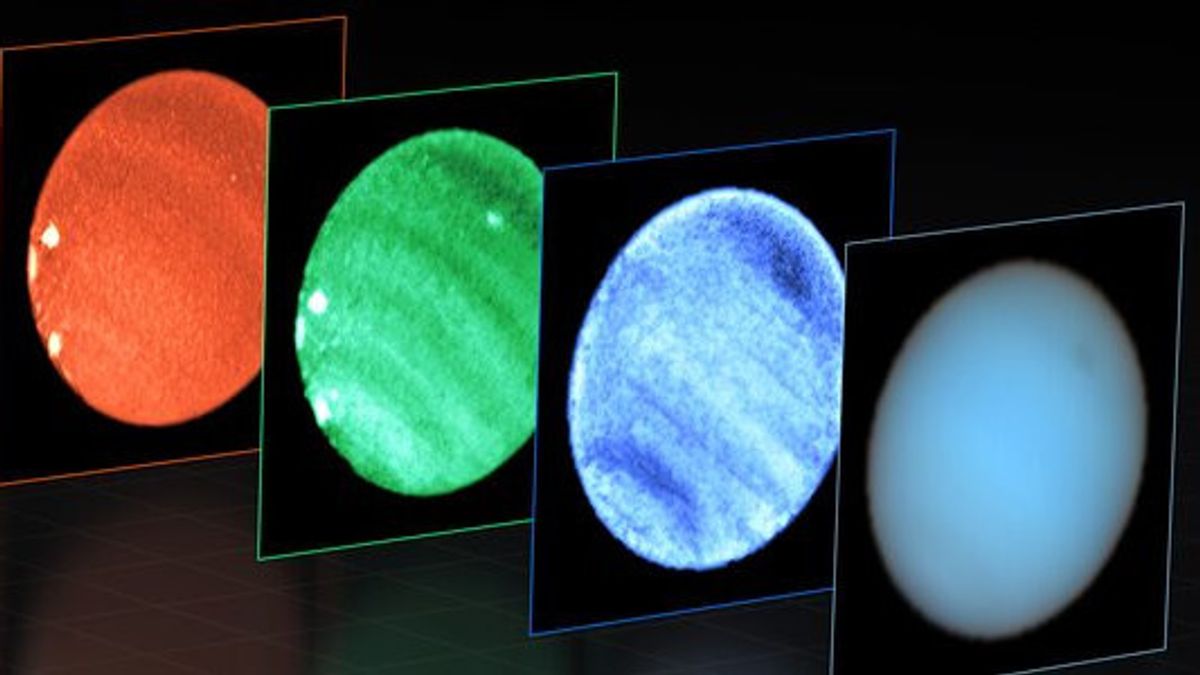
JAKARTA - The big dark spots on the Planet Neptune are a mystery, but astronomers managed to uncover its existence and find further clues about its nature and origin.
Armed with the European Southern Observatory (ESO)'s Very Large Telescope (VLT), astronomers have observed a massive dark spot in Neptune's atmosphere, with an unexpectedly small bright spot adjacent.
This is the first time a dark spot in Neptune has been observed with telescopes on Earth. The great spots are a common feature in the atmospheres of giant planets, the most famous of which are Jupiter's Giant Red Spots.
In Neptune, a dark spot was first discovered by NASA's Voyager 2 in 1989, before disappearing a few years later.
"Since the first discovery of dark spots, I've always wondered what these short and elusive dark features are," said study lead researcher Patrick Irwin.
Irwin and his team used data from the VLT to rule out the possibility of black spots being caused by cleaning in the clouds.
New observations suggest dark spots are likely caused by a dark air particle in the layer below the visible main fog layer, due to ice and fog mixed in Neptune's atmosphere.
Reaching this conclusion is not easy because dark spots are not a permanent feature of Neptune's atmosphere and astronomers have never been able to study them in enough detail.
The opportunity came after NASA's Hubble Space Telescope and ESA discovered several dark spots in Neptune's atmosphere, including one in the northern hemisphere that was first spotted in 2018.
After that, Irwin and his team began learning it from the ground, with instruments suitable for this challenging observation.
Using the Multi Unit Spectroscopic Explorer (MUSE) at the VLT, astronomers can divide the reflection of sunlight from Neptune and its point into component colors, or wavelengths, and derive 3D spectra. That is, they can study the place more in detail than ever before.
"I am very happy because I can not only detect the first dark spot from the ground surface, but also for the first time recording the reflection spectrum of the feature," said Irwin.
As wavelengths probe different depths of Neptune's atmosphere, it has a spectrum allowing astronomers to better determine the height of the dark spots in the planet's atmosphere.
The spectrum also provides information about the chemical composition of various atmospheric layers, which provides hints to the team why they appear dark. Observations also provide surprising results.
"In the process, we found a rare type of bright and deep cloud that had never been identified before, even from outer space," said study co-author Michael Wong, a researcher at the University of California, Berkeley, USA.
관련 항목:
This type of rare cloud appears as a bright spot just next to a larger main dark spot. VLT data show a bright inner cloud newly at the same level in the atmosphere with a major dark spot.
Showing that this feature is a completely new type of feature compared to small clouds of methane ice companion at previously observed heights. With the help of VLT, astronomers can now learn features such as points from Earth.
This is a tremendous improvement in the ability of mankind to observe the cosmos. At first, we were only able to detect these points by sending spacecraft there, such as Voyager," said Wong.
"Then we gained the ability to view it remotely with Hubble. Finally, technology has advanced to allow this to happen. This could cost me a job as a Hubble observer!," he continued.
For information, this study was presented in a paper entitled Dark Spot Cloud Structure and Storm in Neptune's Atmosphere' published in Nature Astronomy.
The English, Chinese, Japanese, Arabic, and French versions are automatically generated by the AI. So there may still be inaccuracies in translating, please always see Indonesian as our main language. (system supported by DigitalSiber.id)













